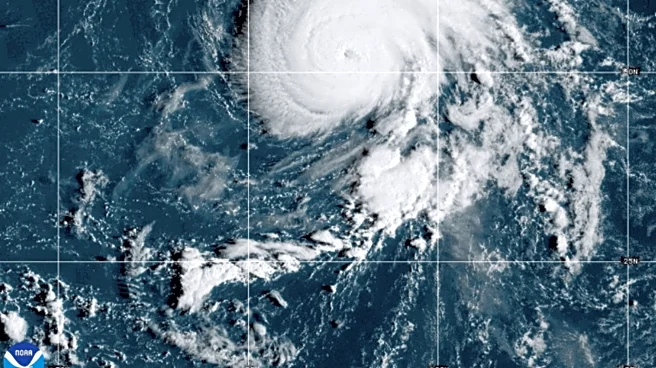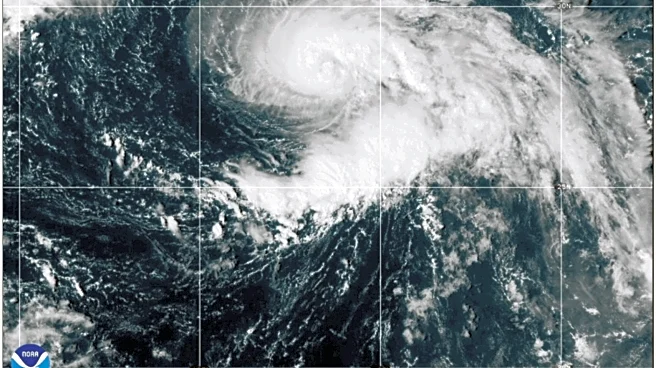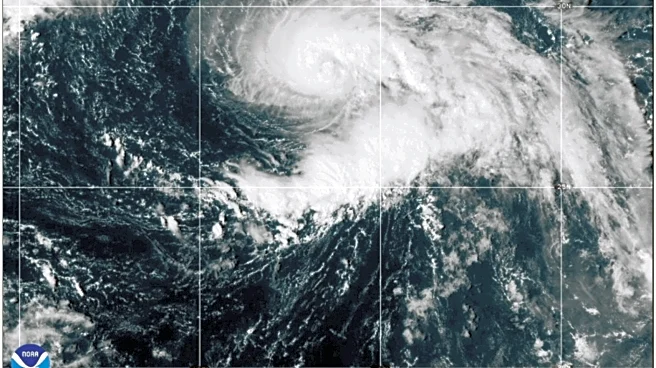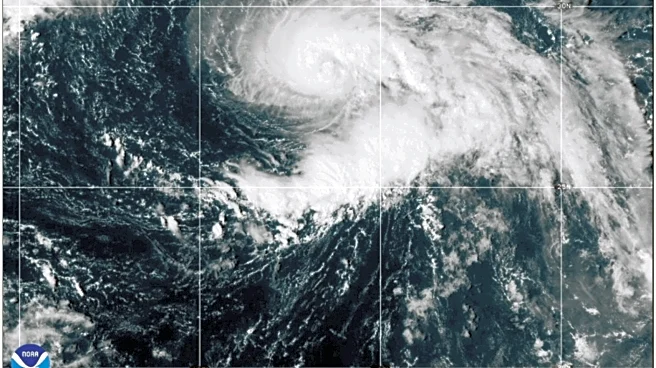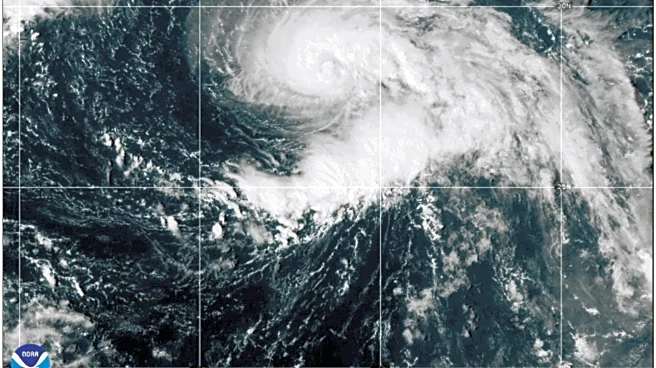What's Happening?
Hurricane Gabrielle has rapidly intensified into a Category 4 hurricane in the Atlantic Ocean, with maximum sustained winds of 140 mph. The storm is currently located 180 miles east-southeast of Bermuda and is moving north-northeast. While Gabrielle poses no immediate threat to land, forecasters have advised residents of the Azores archipelago to monitor its progress as it could approach the islands by the end of the week. The hurricane is causing life-threatening surf and rip currents along the U.S. East Coast, from North Carolina to Canada’s Atlantic coast.
Why It's Important?
The intensification of Hurricane Gabrielle highlights the unpredictable nature of the Atlantic hurricane season, which has been relatively quiet this year. The storm's impact on coastal areas underscores the importance of preparedness and monitoring for potential threats. The advisory for the Azores indicates the need for vigilance in regions that could be affected by the hurricane's path. The situation also serves as a reminder of the potential for rapid changes in storm intensity, which can have significant implications for safety and emergency response efforts.
What's Next?
Forecasters expect Hurricane Gabrielle to continue moving north and east over the next few days, with a potential weakening of wind strength. The hurricane's forward speed is anticipated to increase, and its approach to the Azores will be closely monitored. Residents in affected areas should stay informed about weather updates and heed any advisories or warnings issued by local authorities. The Atlantic hurricane season continues until November 30, and experts caution that more dangerous systems could form later.

